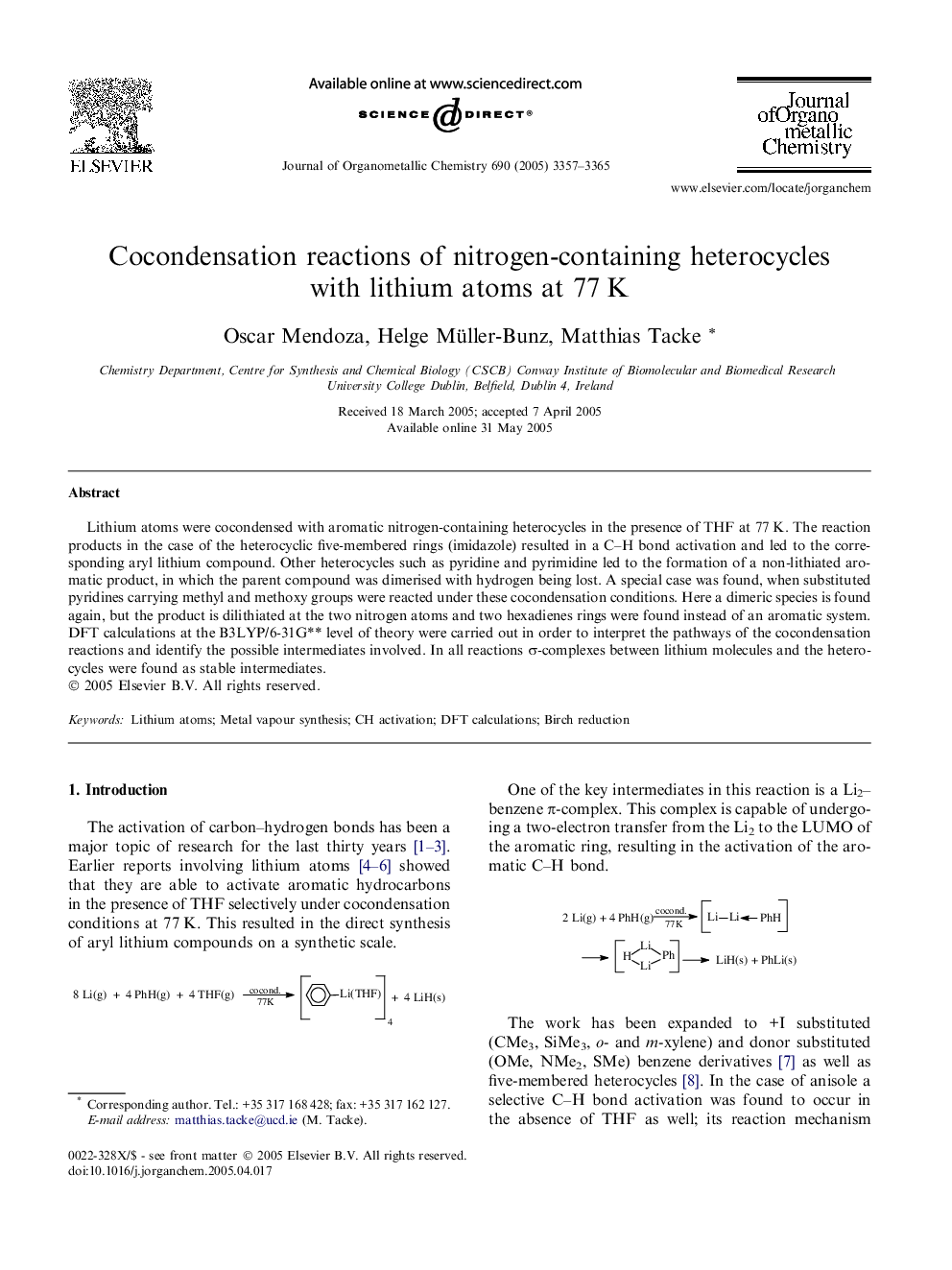| Article ID | Journal | Published Year | Pages | File Type |
|---|---|---|---|---|
| 1326349 | Journal of Organometallic Chemistry | 2005 | 9 Pages |
Lithium atoms were cocondensed with aromatic nitrogen-containing heterocycles in the presence of THF at 77 K. The reaction products in the case of the heterocyclic five-membered rings (imidazole) resulted in a C–H bond activation and led to the corresponding aryl lithium compound. Other heterocycles such as pyridine and pyrimidine led to the formation of a non-lithiated aromatic product, in which the parent compound was dimerised with hydrogen being lost. A special case was found, when substituted pyridines carrying methyl and methoxy groups were reacted under these cocondensation conditions. Here a dimeric species is found again, but the product is dilithiated at the two nitrogen atoms and two hexadienes rings were found instead of an aromatic system. DFT calculations at the B3LYP/6-31G** level of theory were carried out in order to interpret the pathways of the cocondensation reactions and identify the possible intermediates involved. In all reactions σ-complexes between lithium molecules and the heterocycles were found as stable intermediates.
Graphical abstractLithium atoms were cocondensed with aromatic nitrogen-containing heterocycles in the presence of THF. The reaction led to a variety of products depending on the heterocyclic compound used. C–H activation, dimerisation of reactants and dimerised hexadienes were the main products found.Figure optionsDownload full-size imageDownload as PowerPoint slide
